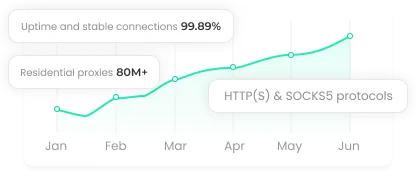Mastering Google Ads and How to Analyze Competitors

Ever wondered what your competitors really do with their Google Ads budget? It's not just guesswork. Behind every ad you see on search results lies a strategy—sometimes brilliant, sometimes flawed—that reveals a lot about where they invest, what they prioritize, and how they talk to potential customers.
If you want to run smarter, more efficient campaigns, learning how to decode those strategies isn't optional. It's essential. In this article, we'll walk you through proven ways to analyze your competitors' Google Ads—from hands-on search results spying to using Google's own powerful tools, plus third-party platforms that reveal the deep tactics behind those ads.
Manual SERP Insight
There's no substitute for direct observation. Manually searching your core keywords on Google gives you a clear picture of who's buying ads, what they say, and how often they show up. Here's exactly how to do it:
Search Your Keywords and Study the Ads
Look at the ads at the top and bottom of search results. Note their headlines, descriptions, USPs (unique selling points), and calls to action. Click through to their landing pages. What's their offer? How's the page structured? Are they capturing emails or pushing demos?
Track Frequency and Timing
Check those ads at different times of day and on different days of the week. Are some competitors flooding the market during weekdays? Or do they dial up on weekends? This tells you when they value your audience most—and helps you decide when to compete or hold back.
Analyze Ad Extensions
See what extras they use—site links, phone numbers, promo codes, maps. These aren't random. They boost click-through rates and hint at which customer actions your rivals want most.
Don't Forget Organic Results
Some competitors pair paid ads with strong organic listings. Compare their messaging and branding across paid and free results. This reveals who's owning the entire search real estate.
Finally, keep a detailed log. Take screenshots. Jot down impressions. This ongoing audit will sharpen your own campaigns over time.
Google's Official Tools
Google doesn't just sell ads—it gives you tools to spy on those ads, too. Here's what to use and why:
Keyword Planner
This tool tells you:
Which keywords your competitors target most
Search volumes and competition levels
Estimated bid costs so you can budget wisely
Use it to discover high-value keywords your competitors rely on—and identify gaps where you can swoop in.
Google Shopping Merchant Center
Selling products? This tool lets you:
Compare your product prices against competitors
See who dominates Google Shopping for your category
Analyze competitors’ promotional copy and special offers
If your prices are lagging or your ad copy feels weak, Merchant Center helps pinpoint exactly what to improve.
CPC Simulator
Wanna know what happens if you tweak your bids or budget? CPC Simulator shows you:
The minimum bid to reach a top ad position
How increasing your budget affects impression share
The trade-offs between cost and visibility
This insight lets you spend smarter—not just more.
Third-Party Tools That Give You an Edge
Two tools that stand out for in-depth competitor analysis are Ahrefs and SEMrush. They reveal not only which keywords your competitors buy but also how well their ads perform and how their strategies evolve.
Ahrefs
Competitor Domain Analysis: See which pages drive paid traffic.
Organic Keywords: Discover the keywords your rivals rank for naturally.
Backlink Profiles: Identify link opportunities to boost your own ads' authority.
Top Pages: Find competitor pages getting the most traffic—and analyze their ad copy.
Rank Tracking: Monitor keyword ranking changes over time to spot shifts in strategy.
SEMrush
Domain Overview: Get a snapshot of paid and organic traffic by competitor.
Advertising Research: Drill down on competitor keywords, CPCs, and budgets.
Ad Position Tracking: Track which ads rank highest and how often.
Ad Copy Analysis: Study your competitors' messaging style and offers.
Advertising Trends: Spot rising keywords and budget shifts—so you're never caught off guard.
Use these insights to adjust your own bids, refine ad copy, and uncover hidden keyword opportunities.
Final Thoughts
Competitive intelligence on Google Ads isn't about copying—it's about understanding. By combining manual SERP sleuthing, Google's own data-packed tools, and third-party analytics, you build a 360-degree view of your ad landscape. That means fewer wasted dollars, better targeting, more impressions, and yes, higher ROI.
You'll know when to bid hard and when to pull back. You'll catch new trends early and keep your campaigns sharp, efficient, and ahead of the pack. Now is the time to take action—start tracking your competitors today because your next winning campaign depends on it.

















































